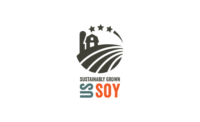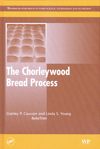U.S. Soy hosts virtual training on gene editing

Photo courtesy of CFI and USB from the video “Gene Editing & Soy: For Healthier Food and a Healthier Planet”
It’s an exciting time for soybean farmers, with advancements in gene editing to improve crops and help solve pressing challenges in farming and food production. In the midst of the tremendous potential, the ability to use gene editing hinges on public support. The collective voice of the soybean industry is pivotal to earning trust as the public asks more questions.
To help equip farmers to engage about gene editing, The Center for Food Integrity (CFI), with support from the United Soybean Board (USB), conducted a three-part virtual training in early August, “Trust in Gene Editing: Media and Engagement Training.”
A group of 20 people participated, including soybean farmer leaders, USB staff and members of Qualified State Soybean Boards. The sessions were designed to highlight innovations in gene editing and bridge the gap with consumers to further trust in U.S. agriculture and crop breeding techniques.
“Being proactive and engaging early and often about the benefits of gene editing is essential to realizing its potential in soy and beyond,” said Mace Thornton, USB vice president of communications and marketing, and CFI board member. “It’s important that we have a diversity of spokespeople and voices in the conversation about new technologies like gene editing. Farmers, as well as researchers and scientists developing gene editing, are credible sources that are trusted by consumers.”
As part of the training, participants were introduced to a new communication guide, Gene Editing & Soy: Engage in the Conversation. Funded by USB and created through the CFI Coalition for Responsible Gene Editing in Agriculture, the guide includes research on consumer attitudes about gene editing, CFI’s Trust Model, the importance of shared values, and five effective communication approaches:
- Explain gene editing in simple terms and focus on public benefits and values: Consumers are most supportive of environmental benefits and disease resistance.
- Connect to gene editing solutions for human health: Advancements in human medicine are the strongest entry into conversations about gene editing in food.
- Talk about evolution of genetic improvement, not revolution: The public is more supportive when gene editing is described within a continuum of plant and animal genetic improvement, which has a legacy of safe, responsible use.
- Leverage expert spokespeople who are credentialed and relatable, show integrity and share values: Scientists, academics and farmers rank high with consumers.
- Share analogies and visuals that explain science but are not oversimplified or condescending: The most effective analogies refer to precise changes through gene editing within a larger framework, like changes to a word in a set of encyclopedias or changes to a feature on a blueprint.
“Farmers are used to talking to farmers. Engaging with consumers on values is a different approach,” said Jeff Magyar, Ohio soybean farmer, USB director and a member of Ohio Soybean Council and Ohio Soybean Association. “The research shows that while consumers know very little about gene editing, they’re very open to learning more. As farmers, we have a great opportunity to share the story of gene-edited soy and the many benefits to people, animals and our planet.”
To learn about gene editing and ways to build support, view a soy-specific webinar here, and download the communication guide at geneediting.foodintegrity.org. In addition, a new video and infographic on the benefits of gene-edited soy are available at www.BestFoodFacts.org.
For more information about the training, contact Mendy Rose at mendy.rose@foodintegrity.org.
Looking for a reprint of this article?
From high-res PDFs to custom plaques, order your copy today!








